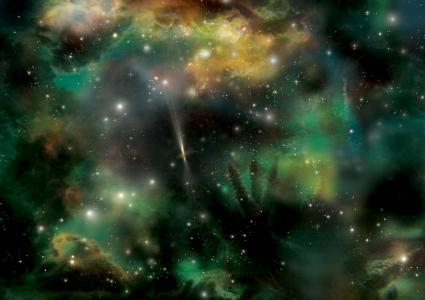
|
|
|
|
June 14, 2009
HPWREN Aids the Study of Dark Cosmic Explosions By W. Scott Kardel Public Affairs Coordinator, Palomar Observatory, California Institute of Technology Gamma-ray bursts (GRBs) are some of the most colossal explosions in the universe. They signal the explosive deaths of massive stars and are bright enough to be visible from a distance of 13 billion light years. Most of these events are accompanied by a bright visible light afterglow that can be seen for up to several hours after the GRB, yet a few of them are mysteriously dark. Recent findings, announced at this week's meeting of the American Astronomical Society, have shed new light on the study of these mysterious events known as dark GRBs. UC Berkeley post-doctoral fellow S. Bradley Cenko is no stranger to GRBs. He studied them for several years using the automated 60-inch telescope at Caltech's Palomar Observatory. As bursts are discovered by NASA's Swift gamma-ray satellite the Palomar 60-inch telescope is called into action to catch the fading afterglow of each observable GRB explosion. Position data moves to the observatory, carried by HPWREN, allowing the telescope to pinpoint and quickly study each GRB. The collected data is sent out via HPWREN to astronomers at Caltech in Pasadena. HPWREN provides the observatory with a high-speed connection making this type of rapid response possible. Through March 2008 Cenko and his colleagues studied 29 GRBs, with 14 of those classified as dark. Now these astronomers have performed follow-up studies with the twin 10-meter Keck Telescopes to find where dark GRBs live and what makes them dark. The full story is available at: http://berkeley.edu/news/media/releases/2009/06/08_darkGRB.shtml
|
